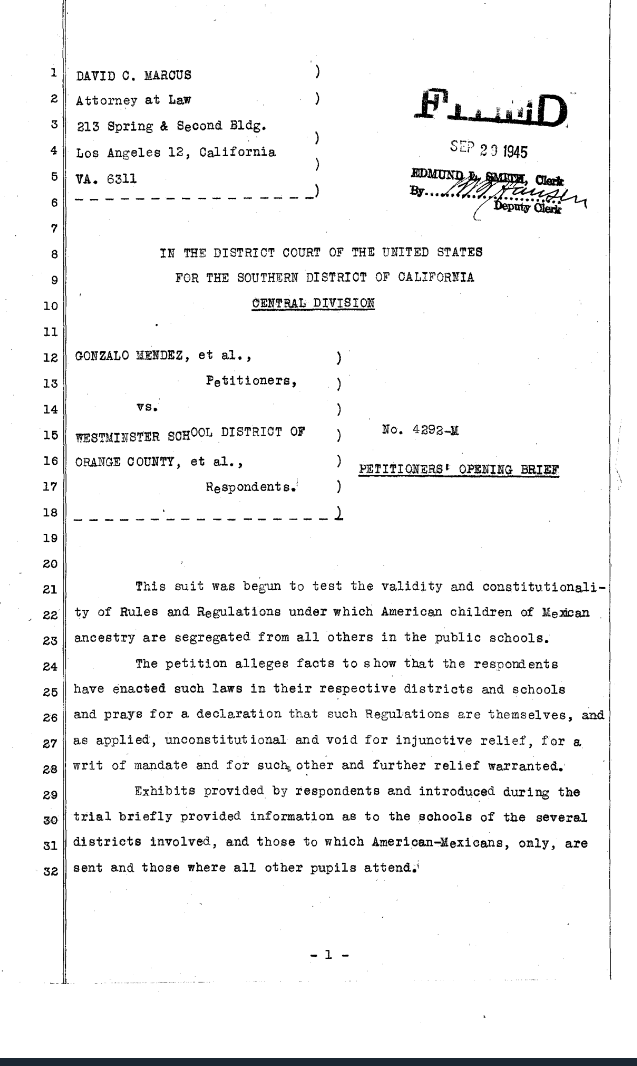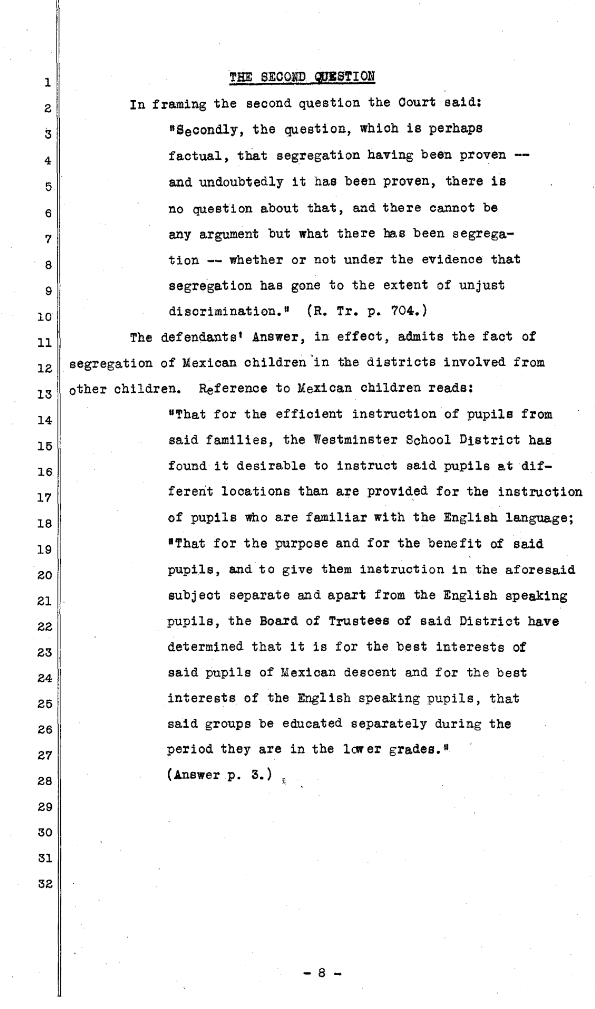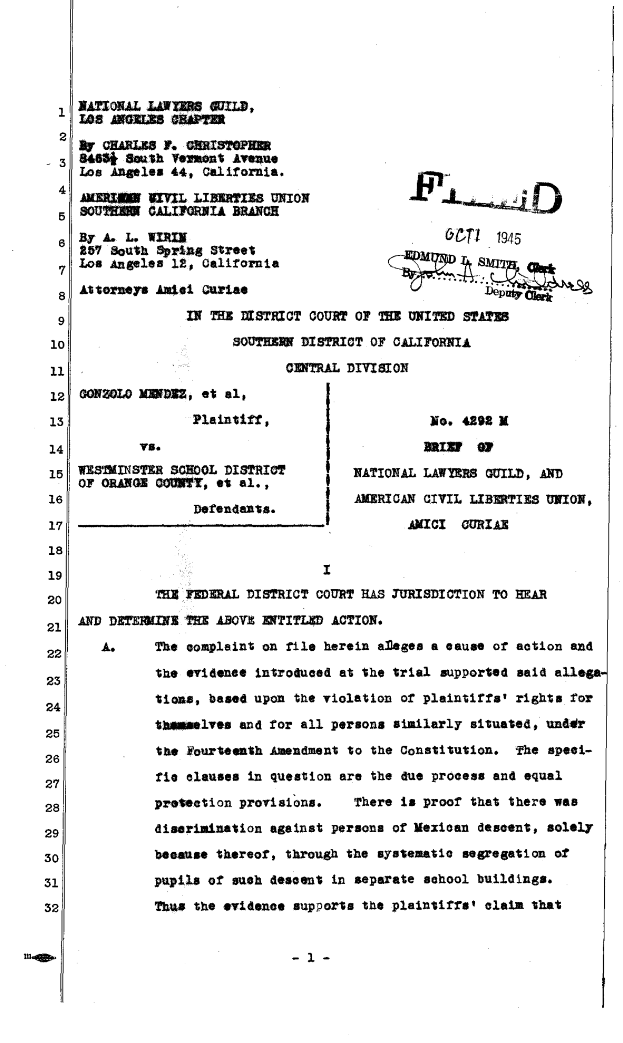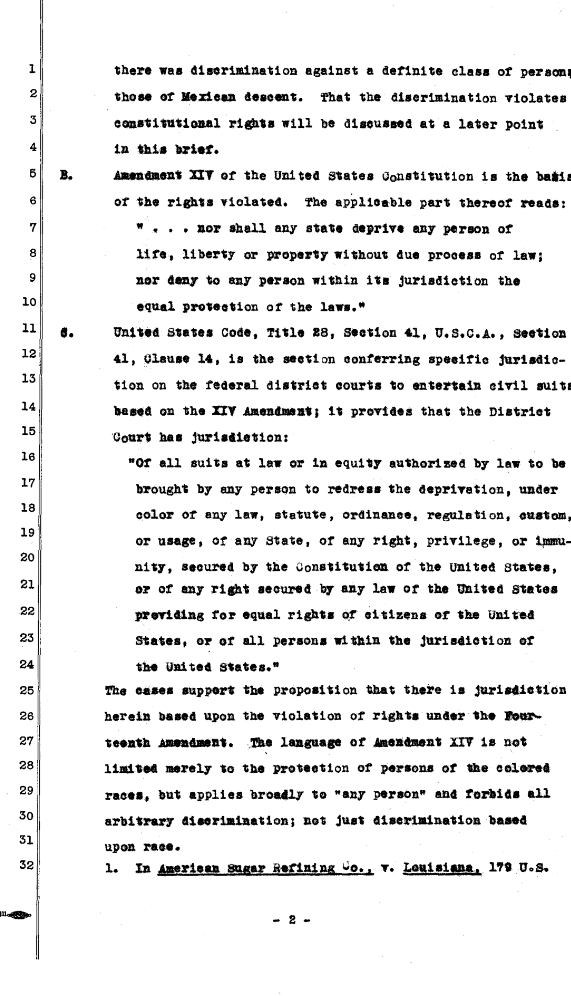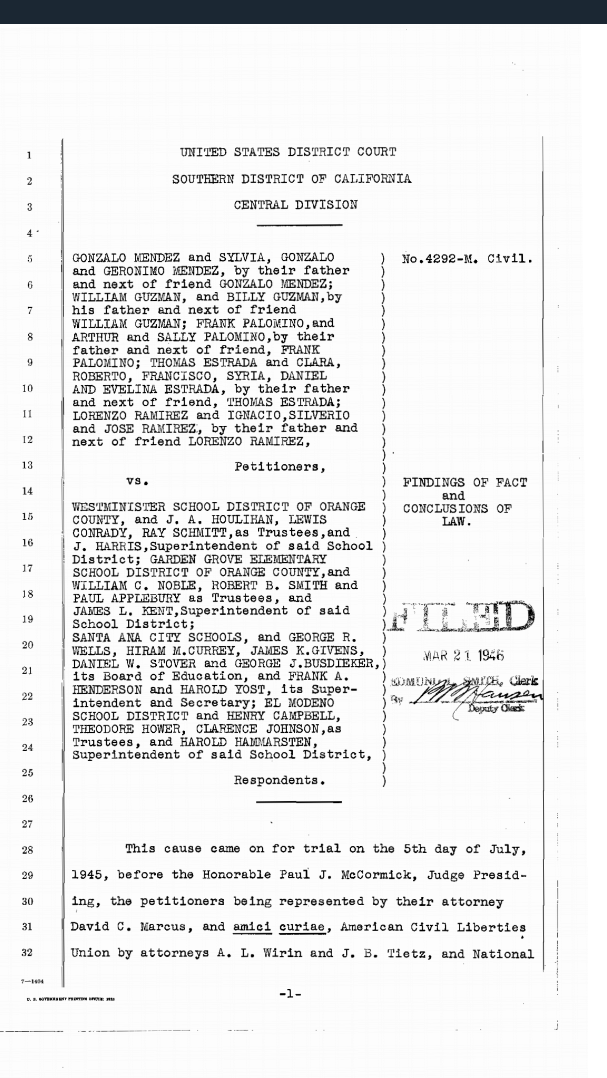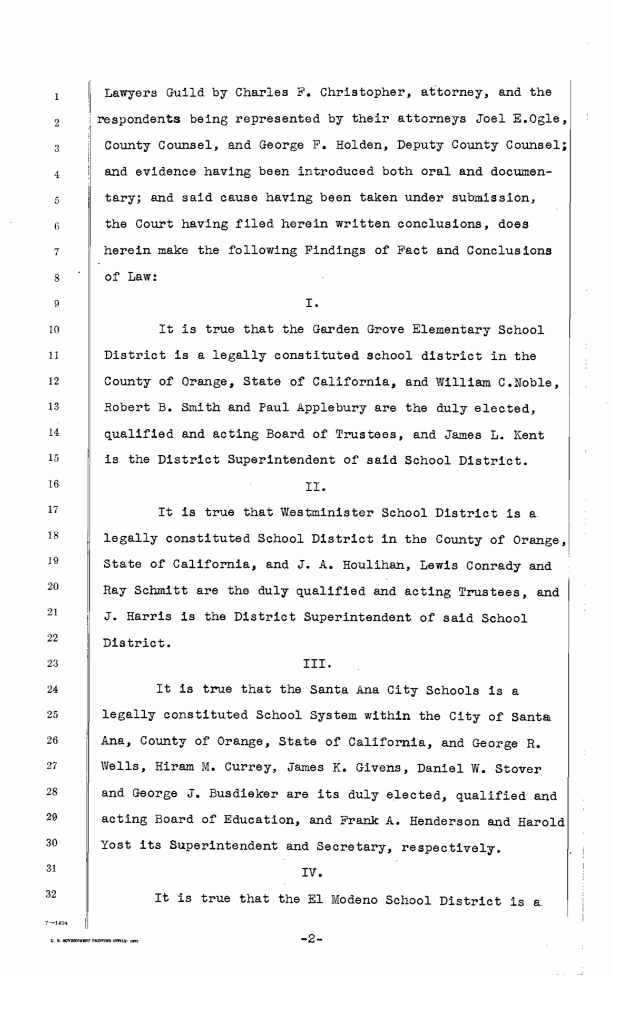Five Mexican-American fathers Thomas Estrada, William Guzman, Gonzalo Mendez, Frank Palomino, and Lorenzo Ramirez challenged the practice of Mexican school segregation in the United States District Court for the Central District of California in Los Angeles. The petition record dated March 2, 1945 was the first attempt to address the issue of segregation towards Mexican-American students. This petition initiated the Mendez V Westminster case to be exact. The case stated that four school districts were accused of malpractice concerning the segregation of students based off race and the denial of entrance to the same schools based on race. These school districts were the Westminster School District in Orange County, The Garden Grove School District in Orange County, The Santa Ana City Schools, and the El Modeno School District all were accused of denying the students access to their schools based strictly on their Mexican descent. Being a violation of the 14th amendment, this petition began and initiated the predecessor of the dismantlement of school segregation across the nation in the Brown V. Board of Education case. This connects to the widespread social inhibitors that are seen with people of color and the inherent privilege of white students in educational systems.
The following is an official record of the petitioners opening statements. Dated September 7, 1945, filed on behalf of the students by parents, this brief puts forth arguments that supported the case and addressed issues raised during the trials. This opening mentioned many of the racial prejudices that was incredibly clear and obvious on the students of Mexican descent in these listed schools. According to the opening, many of the parents complained to school officials about the mistreatment of their students, and the parents were met with bigoted responses that detailed their children were not as prepared as the other students of other ethnicities. The schools took the consideration of the general welfare of the privileged white students and refused to hold the Mexican students to the same standard. This policy therefore legitimized the racist ideology and perception of Mexican students as dirty, non-English speaking, and intellectually and mentally inferior to white students. Which revealed the social stigmas and social perspectives regarding Mexican Americans and their children.
In October 1, 1945 a joint filing by the American Civil Liberties Union and the National Lawyers Guild was submitted to the court. The briefing presents arguments that supported the case and addressed issues raised during the trials, such as pointing out the violation of the 14th Amendment and other landmark court cases to reinforce their clients position. The National Lawyers Guild and the American Civil Liberties Union brief over the Mendez V. Westminister case not only demonstrated professional guidance in this case, but also added some legitimate support from two national organizations. In the end, it serves the side of protecting constitutional rights of Mexican Americans by only strengthening the position of those families involved with the litigation(Mendez).
This primary source is one of the official court documents about the Mendez. V Westminister landmark case, in this case it is the conclusion and injunction made by Judge McCormick. In his conclusion he finds the Westminister school district, the Garden Grove school district of Orange County, The Santa Ana City Schools and Santa Ana School Board of Education, and lastly the El Modeno School district guilty of the violation of constitutional rights of “Latin and Mexican” or Mexican-American students. In this case, Judge McCormick ordered a re-integration of schools regardless of ethnicity, and it became an incredibly important legal precedent in regards to the supreme court case of Brown V. Board of Education. That being said, the success of this court case provided the fundamental legal basis in arguing against the separate but equal doctrine. This was written and effectively implemented in March 21 of 1946.



